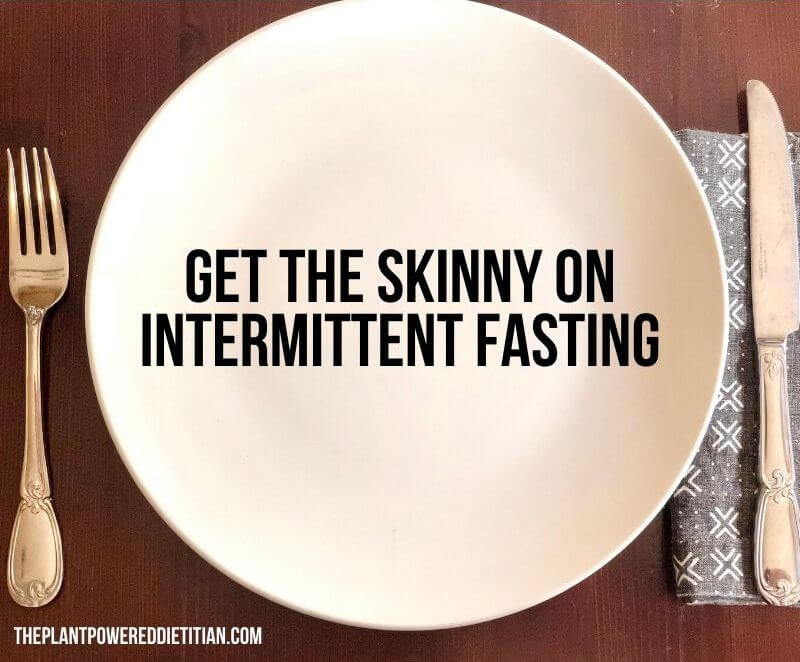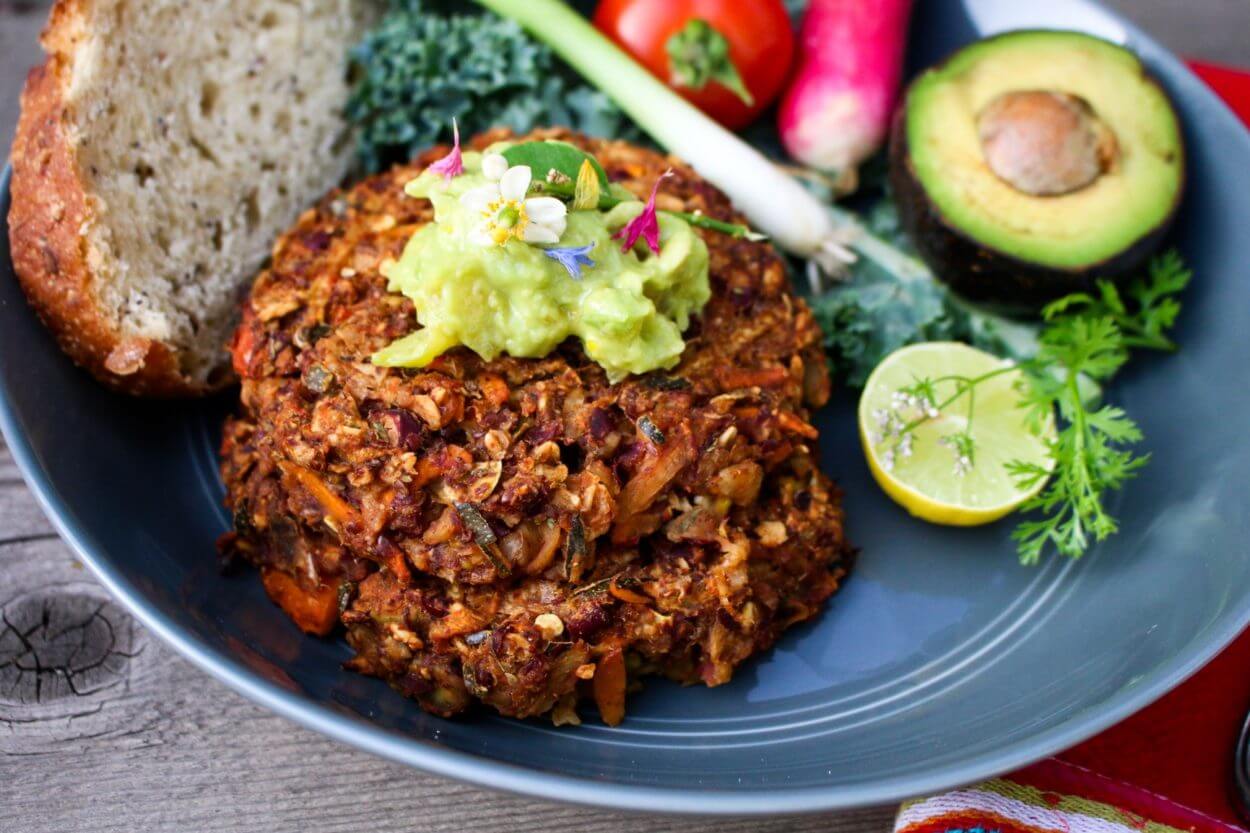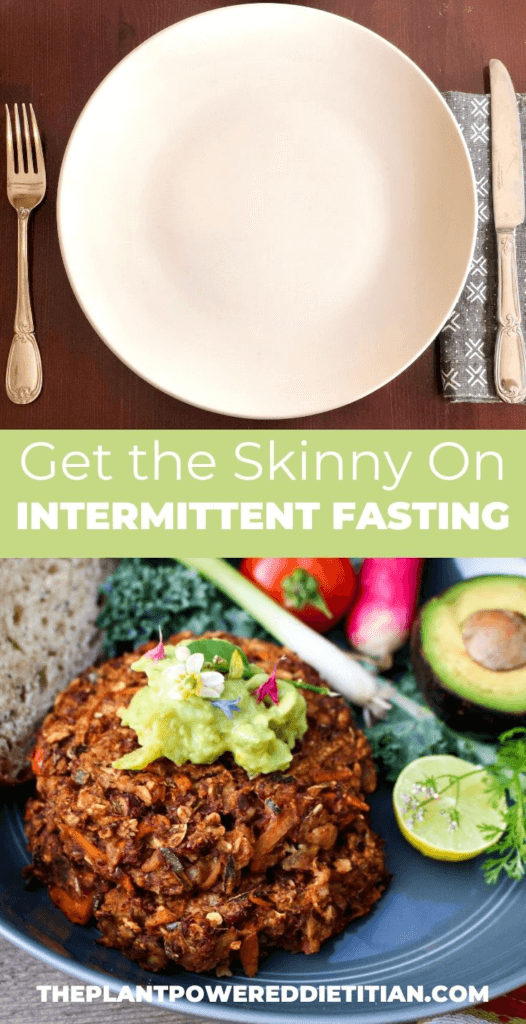Get the Skinny on Intermittent Fasting

Intermittent fasting (limiting the hours in the day that you eat) is the latest buzz word in weight loss. But is it good for you? And how do you do it safely? We dive into this hot topic.
Intermittent fasting is the darling of diets these days. Hugely popular in the media—it seems half of Hollywood is giving it a try—as well as at the gym, in coffeehouses and even farmers markets, this eating pattern has picked up speed. Because it is more about when you eat than what you eat, the intermittent fasting conversation is happening within all patterns of eating, even plant-based! Despite all the attention, there’s still a lot unknown surrounding fasting.
One of the things most people want to know is how it’s done because there are so many different approaches. But it can be adapted to any eating pattern, and can definitely be an effective weight loss tool within a plant-based diet. In fact, the two can combine quite well. Some potential benefits of intermittent fasting include reducing insulin resistance, fat and weight loss, and lowering oxidative stress and inflammation. Additionally, it may aid in the prevention of Alzheimer’s disease. Add a plant-based diet to the mix and the benefits grow to include development of healthier eating habits, as well as disease prevention.

How Intermittent Fasting Works
There are two stages of intermittent fasting: the fed state and the fasted state. The fed state converts glucose from your last meal into sugar for energy, and because insulin levels rise, the fat-burning process is halted. During the fasted state, insulin levels are low and the body metabolizes stored fat and burns it for energy. Achieving the fasted state is the key to weight loss. The main key in intermittent fasting is to limit the hours of the day that you eat. Some believe it may be easier to front-load your meals and to stop eating earlier in the day because it helps curb appetite better and provides feelings of fullness.
These are the three basic types of fasting:
- Alternate-Day Fasting. A few days a week, eat 25% fewer calories in at least one meal combined with days of no restriction at all. Some use the 5:2 method, which has no restrictions for 5 days of the week, but the remaining two days are limited to 400-500 calories.
- Whole-Day Fasting. Similar to alternate-day fasting, it involves non-restricted and restricted periods of eating. The difference between the two is that whole-day fasting calls for 2 days of 24-hour fasting instead of restricting calories. This one may be trickier because the long fast can make it easier to give in to cravings and overeat.
- Time-Restricted Fasting. This pattern follows a laid-out timeframe of when to eat, like eating only between 8am and 3pm and fasting the rest of the day.
Potential Risks
Though there have been some reported benefits for intermittent fasting, it may not be the answer for everyone. Some shouldn’t try intermittent fasting so that they can stay healthy. People with diabetes may risk their blood sugar going too low. Those with eating disorders can regress into unhealthy eating patterns. Some people have to take medication during specific times of the day with food. Pregnant and breastfeeding won’t get the calories and nutrients they need. In addition, you may not meet all of your nutrient needs for protein, vitamins, and minerals with a reduction in meals during the day. It is best to consult with a doctor or registered dietitian nutritionist before trying intermittent fasting.
Dr. Monique Tello from the Harvard Health Blog compares intermittent fasting to simply eating less, only it’s much more uncomfortable. Initial studies reveal that people who fasted every other day struggled more than those who ate fewer calories per day, but both groups finished with similar results. A 2018 study at the University of Alabama concluded that simply eating earlier in the day and increasing fasting periods at night helped with weight maintenance and lowered blood pressure and insulin levels.

Giving it a Try
If you want to give Intermittent fasting combined with a plant-based diet a try, prepare for your fast by consuming meals that are high in satiating foods (those with protein, fiber, and water, and low energy density) and always make sure to drink lots of water. Remembering to eat enough calories during non-fasting times is critical, because a plant-based diet usually contains less calorie-dense foods than other diets. Working out while dieting is difficult for some because they may not have enough fuel. If you love to work out, try to do so on non-fasting days, and during your eating window, be sure that you have proper pre-workout and recovery meals.
There are a few main points for beginning intermittent fasting on a plant-based diet. Start slowly—don’t jump in right away or you will end up either eating too much or too little. If you’re trying the 5:2 diet (5 normal days and 2 days reduced calories), try a 6:1 ratio (6 normal days and 1 day reduced calories) to ease into it. If you are more interested in trying a fasting window, try doing 10 or 12 hours of eating and the rest fasting before gradually increasing to an 8-hour eating window.

It’s important to make sure the diet you want to try fits into your daily schedule and won’t affect daily habits, like work. Those who tend to work longer hours often report the 16:8 diet (16 hours fasting with 8 hours of eating) fits best, as they can eat between 11am and 7pm, so a large portion of the fasting window includes sleeping. Water, tea, and coffee are easy ways to curb cravings or hunger pangs, and you can mix it up with flavored or sparkling water to change it up. Meal planning and meal-prepping may be helpful, as it may lead to healthier eating habits. Having a meal ready-to-eat is super convenient. But fill these meals with plenty of fiber and proteins so that they can satisfy you longer.
Written by Rachel Valez, Dietetic Intern with Sharon Palmer, MSFS, RDN
For more information on healthy weight check out these blogs:
7 Vegan and Vegetarian Weight Loss Tips & Recipes
11 Science-Based Weight Loss Tips
Top 6 Weight Loss Fads Busted by Dietitians



